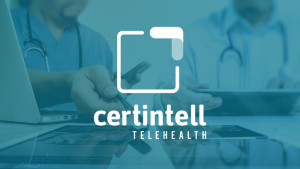Clinician time is valuable, which is why it should be less burdened with administrator tasks. Here’s how to maximize it with digitized workflows and interoperable HIE systems.
Webinar Presenters:
- Tom Skelton, CEO of Surescripts
- Lynne Nowak, Evernorth Vice President & General Manager Clinical, Data & Provider Solutions of Express Scripts
In recent years, there has been a massive shift in the healthcare industry, requiring clinicians to adapt by finding new methods, including changing their workflows. Demand for more digitized workflows, both internally and externally, is only increasing. In the FierceMarkets webinar entitled “Disruption, Acceleration & Innovation on the Frontline,” speakers from Surescripts came together to talk about the importance of innovation, for patient outcomes and for peace of mind.
Lynne Nowak and Tom Skelton work for Surescripts, a company which provides transparent pricing information to clinicians and patients. In their field, digitizing the process of price shopping for medication has helped their clinicians feel less like administrators and more like the medical professionals they are. And on the other side, increasing the convenience of care makes it more likely to be adopted and followed through by the patient. Time to treatment can often be a number that drags on for too long, Skelton mentioned, but digitization is an opportunity to help the health care system.
Information Sharing Becomes Easier
Patients and their care providers have come to be more connected than ever before. Thus, naturally comes the need for more connection between providers about their shared patients.
“There’s been a huge blurring of — venues of care in the last year and what that’s meant is that the availability and accessibility of information is just a preeminent need,” Skelton said. “It just sits front and center, because it’s not really clear where the patient is going to be seen, but when they show up, the information has to be there.”
Nowak went on to elaborate on how interoperability is critical to the safety of the patient. Any gaps in information can negatively impact and lead to uninformed decision making.
“If a patient goes to a different care venue, and the different EMRs don’t connect to each other, that care provider is really entering that patient’s care delivery in the dark,” Nowak said.
Both Nowak and Skelton proposed telehealth and various technological tools as a solution to increasing connectivity. Both of the speakers acknowledged how telehealth may have been marked by fragmentation in the past. However, with the technology that is available to clinicians now, it presents more opportunities than threats to workflows.
Skelton explained that telehealth can improve patient experience and health outcomes, “without compromising on care.” He believes that administrative burdens on clinicians can be circumvented by digitizing workflows and processes.
“Many of these administrative burdens that flow to the physician could be completely digitized via a better process. To do that, we’ve got to make sure that the information that exists about that patient is made available not just to the provider, but also to their support teams. Because part of the way you win this battle, I think, is making sure that many of these items don’t even make it to the provider, that we take the opportunity of information from other healthcare venues, or other providers the patient has visited, and make it available prior to the visit…”
Innovation Predictions for the Future
Interoperability for clinicians will only continue to grow in the future, Skelton and Nowak predict, but this time at a much faster pace than ever before. Nowak mentioned that innovation turnaround time used to average seven years. However, now industries are seeing adoption in as little as 18 months. So, it would be wise for teams to prepare themselves for changes big and small.
Access, convenience of care, medication delivery, virtual care and transportation will all be elements of care delivery that will continue to be active and flourish in the near future, Skelton said.
The health care industry has already done a substantial amount of work incorporating electronic health records (EHRs) into workflows. Now, that streamlined optimization will continue to advance and become increasingly clinician-friendly, particularly due to pressure on the system to decrease physician burnout.
Nowak predicted that consumer-led medicine will take center stage and patient-provider interactions will now require active dialogue in order to find solutions best suited to the patient. Through doing so, providers can begin to act in more holistic ways to treat their patient populations. Private-public partnerships could also help supplement this effort.
Looking for help?
If your practice or organization is interested in implementing or facilitating some of the workflow proposals mentioned above, you have the option of a fully-equipped Virtual Medical Practice through Certintell that is ready to help you change care delivery in a matter of days. We can reduce physician workload and increase access to patient-centered care, virtual care delivery, and telepharmacy services. Ready to feel less like an administrator and more like a clinician again?



